Managing the “Attractive Nuisance”
Why a Pool Audit Means Good Risk Management
by Gerald M. Dworkin
Printed in Club Director. (1990). Revised April 10, 2014
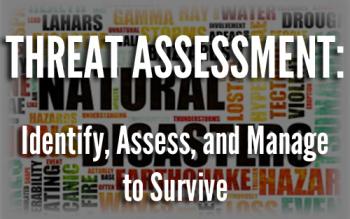
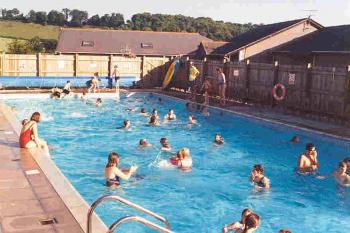
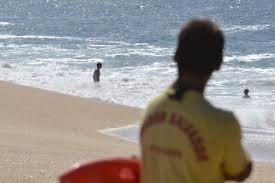
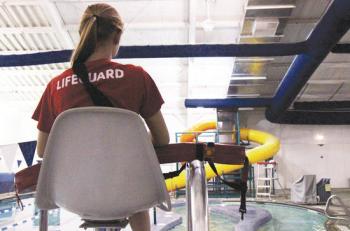
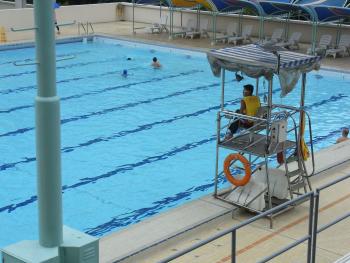
Guaranteeing the safety of all members who use your club’s aquatic facility and safeguarding the assets of the club against possible loss are critical elements of a comprehensive Risk Management Program, which must be implemented and sustained throughout the pool season. The program should also be evaluated at the end of the season to better prepare for next year’s use.
A Pool Risk Management Program
A Risk Management Program for the club pool has three major components:
- Identify the risks. This is best done by conducting an audit of the facility at the beginning of the pool season, and repeating this audit on a frequent basis throughout the season. The audit includes an evaluation of all physical equipment located within the pool area, including steps, ladders, decks, locker and shower areas, rescue and safety equipment, and so on. In addition to the physical audit, club management should consider all potential emergencies that could occur within the pool facility. State, county, and city standards and codes should be reviewed as well.
- Develop methods to reduce or eliminate hazards and risks. After identifying the risks, a plan must be developed for the club pool to eliminate or reduce the hazards and risks. This plan must include the development of standard operating procedures (SOPs) for your club’s staff to follow in order to safeguard the members. The plan should also include the development of emergency action plans (EAPs) that would detail the procedures that qualified club staff are expected to follow when they respond to various types of problems and emergencies at the pool.
- Administer the program: train, educate, and then train and educate some more. Once your club has established the SOPs and EAPs for the pool, club staff need to be adequately trained. This training includes an orientation to the pool facility as well as an understanding of the established SOPs. Hazards and risks must be carefully pointed out to club staff during their training, because staff need to be competent in their ability to recognize potential problems and to deal with them immediately and effectively.
Staff will also need to be continually redrilled on the EAPs established for the club’s pool. Members, too, should be educated about safe operating practices in or near the pool as well as which types of activities are permitted and which forbidden. This means that the General Manager and the pool staff can never assume that every member understands the rules. Tell them again and show them again, if necessary. The safety of your club and its members depends on this.
The Pool Facility Audit
The Risk Management Program implemented for your club pool needs to be monitored on an ongoing basis throughout the season. Accident and operating records need to be carefully reviewed to determine if patterns exist and if they have been addressed. When a hazard exists, a danger of injury exists and must be managed. The audit that your General Manager and the pool staff conduct will help determine how your club manages the “attractive nuisance” that is your pool facility.
Here is a checklist of what to look for in the pool facility:
Locker Rooms
- Non-slippery decks, walkways, showers, and toilet areas
- No sharp edges on lockers or walls
- Good health and sanitation considerations
Pool Area
- Ladders, steps, and handrails secure
- Non-slippery decks and walkways
- No obstructions on decks or walkways
- Rules and regulations to prevent accidents posted and enforced
- Diving boards secure
- Rescue equipment up to code
- Emergency communication readily available and numbers/contacts posted
Chemical Storage Area
- Material Safety Data Sheets filled out
- Chemicals properly stored and labeled
- Chemical handling procedures established
- Emergency procedures established
- Chemical handling safeguards in place
NOTE: Several pool chemicals come under EPA and OSHA regulations as toxic and hazardous. These should be included in your club’s overall “Right to Know ” audit. For further information, contact NCA.
Club Staff
- Certifications required in first aid, CPR, lifeguarding, and pool operation and management, as appropriate
- Solid knowledge and understanding of pool SOPs and EAPs
- Training in use of specialized equipment
- Training in risk management (recognition of hazards and risks)
Legal Liability and Your Club’s Pool
Unfortunately, when a liability issue comes up, it is usually because someone at the pool has been seriously injured, or worse. Therefore, as part of the comprehensive risk management program at your club, the following principles of liability need to be reviewed and carefully considered.
Most liability suits revolve around management’s failure to do certain things. These include, but are not limited to, the following:
- Providing safe facilities and equipment
- Supervising staff and members properly
- Providing adequate security when the pool facility is closed, as well as during normal operating hours
- Employing qualified staff in sufficient numbers
- Prohibiting dangerous conditions
- Permitting the pool to be operated at odd hours without proper staff
If the facilities or equipment are not safe, staff must take immediate action to correct these conditions or to safeguard the club’s members from them. Appropriate supervision of club members is required. In states where qualified lifeguards are not required by law, appropriate warning signs must be posted detailing both safe and unsafe (i.e., appropriate and inappropriate) pool behavior.
When lifeguards are required, it is management’s responsibility to assure their qualifications for the job. However, these qualifications are not assessed solely by the display of various lifesaving certificates or courses. Lifeguards must be able to carry out their responsibilities competently, including observing and recognizing hazardous situations, recognizing victims in distress, and responding appropriately to prevent accidents and make effective rescues.
There are certain definitions that club management should be aware of when dealing with lifeguard staff:
Certification: The formal notice of certain privileges or abilities after the completion of requisite levels of training or testing. The possession of a certificate obligates the individual to conform to the standard of care of other certified personnel.
Records and Reports: Compilation and maintenance of accurate records and reports of all accidents, victims, and conditions. If an action or procedure is not recorded on the written report, in the eyes of the courts it was not done. An incomplete or untidy report is evidence of incomplete or inexpert emergency care.
Good Samaritan Laws: Assurances that someone who voluntarily helps (or attempts to help) an injured or suddenly ill person is not legally liable for errors or omissions in rendering emergency care in good faith. Immunity from gross negligence or willful and wanton misconduct is not provided. Lifeguard personnel are required to meet the responsibilities of their position. Good Samaritan laws will not protect lifeguards if the standard of care is violated.
Standard of Care: Actions a reasonably prudent person with similar training and experience would take under similar circumstances with similar equipment and in the same place.
Negligence: Failure to perform an important or necessary procedure, or performing such a procedure in a careless or unskilled manner that violates the standard of care.
Specific Considerations for Pools
There are a number of areas that require special consideration for risk management at a club’s pool facility. The most significant of these include the following:
Diving Boards. The swimming area must be separated from the diving area. A 12-ft. minimum depth for 16-ft. competitive diving boards and a 10-ft. minimum depth for 12-14-ft. recreational diving boards should be required. The maximum depth of the hopper should extend 16 feet forward of the diving board edge and 10 feet on either side of the board. If the board has an adjustable fulcrum, it should be locked in the most forward position in order to reduce the bounce and spring of the board.
Water surface agitators should be considered to help the vision of the diver. Appropriate rules should be enforced such as:
- one bounce per board,
- no back dives,
- landing area must be cleared before the next diver begins to dive, and
- diver must exit to the closest ladder after the dive.
Swim Meets. Starting blocks should not be placed in the shallow end of the pool. Minimum depth standards should be checked. All members and competitors must be aware of the pool rules. Lifeguard staff must be available at all times.
Children. Children must always be supervised by parents and lifeguard personnel. Inflatables should only be allowed if adequate supervision can be guaranteed. Horseplay and running must be prohibited at all times.
Increasing the awareness of parents is one of the best ways to minimize pool risks to children. Your club may want to offer “water adjustment” or “waterproofing” classes to provide an opportunity for parents to work one-on-one with their children. In many cases, these classes actually teach the parents more than the children.
The club should require that all doors with access to the pool have spring locks and that gates have self-closing and self-latching mechanisms. Also, a fence, wall, or natural or artificial barrier should completely enclose the club pool so that children cannot wander into the pool area when no one is there to provide proper supervision.
A club should also do the following:
- Use a float line to indicate where the deep end begins so that children do not accidentally wander into water that is over their heads.
- Keep reaching and throwing aids on both sides of the pool.
- Always completely remove the pool cover to avoid the possibility of anyone, especially small children, being trapped.
- Make sure the pool always has adequate lighting so that swimmers can clearly see the bottom. Illumination should be sufficient so that all swimmers can judge the depth of the water.
- Never use the pool if any of the grate outlets are missing or broken. A small child can easily be trapped and drowned by the suction.
Adults Swimming During Non-Lifeguard Hours. If state, county, or local laws require lifeguards, this practice cannot be allowed. No waiver from liability will hold up in a court of law should an accident or drowning occur at the club.
Lifeguard Certification. Certifications in first aid, CPR, and lifeguarding should be required as minimal entrance requirements for lifeguard staff. However, as was discussed previously, the possession of certificates does not assure the training, knowledge, or skill level of the individual. Club management has the obligation to assure the knowledge and training of all club lifeguard personnel. These staff members should be carefully screened, and appropriate training must be provided before they begin work at the club. Training, specific to your club’s pool facility, must be maintained throughout the pool season.
Pool Parties. Appropriate safeguards must be maintained during pool parties, including supervision by lifeguard staff and enforcement of all club rules and regulations. Alcohol should be restricted during activities involving use of the club pool, and all drug use should be strictly prohibited.
Maintenance and Operations. Local, county, or state ordinances must be followed pertaining to the storage and handling of chemicals. Instructions on chemical containers must be followed to the letter.
Managing these and other possible sources of risk at your club’s pool will help members enjoy next year’s pool season even more. For the health, safety, and pleasure of all, managing the “attractive nuisance” well is well worth it.


